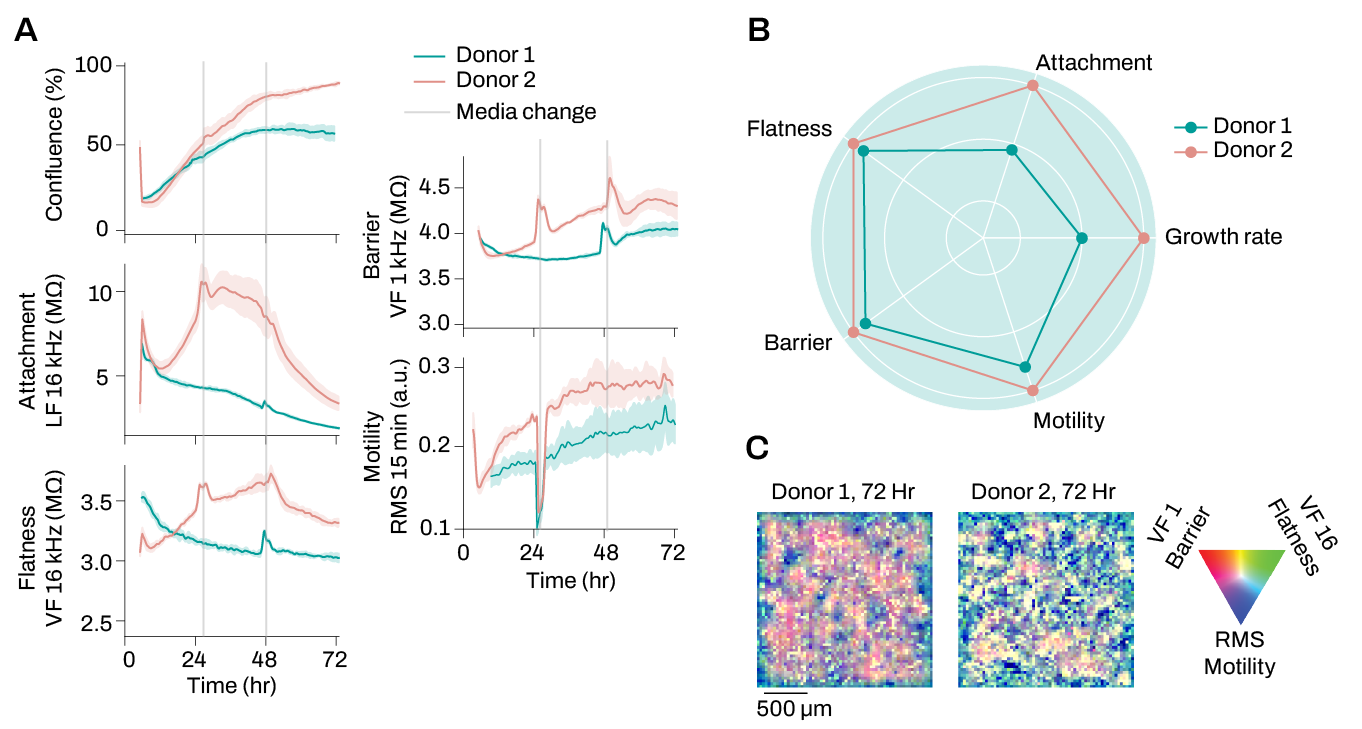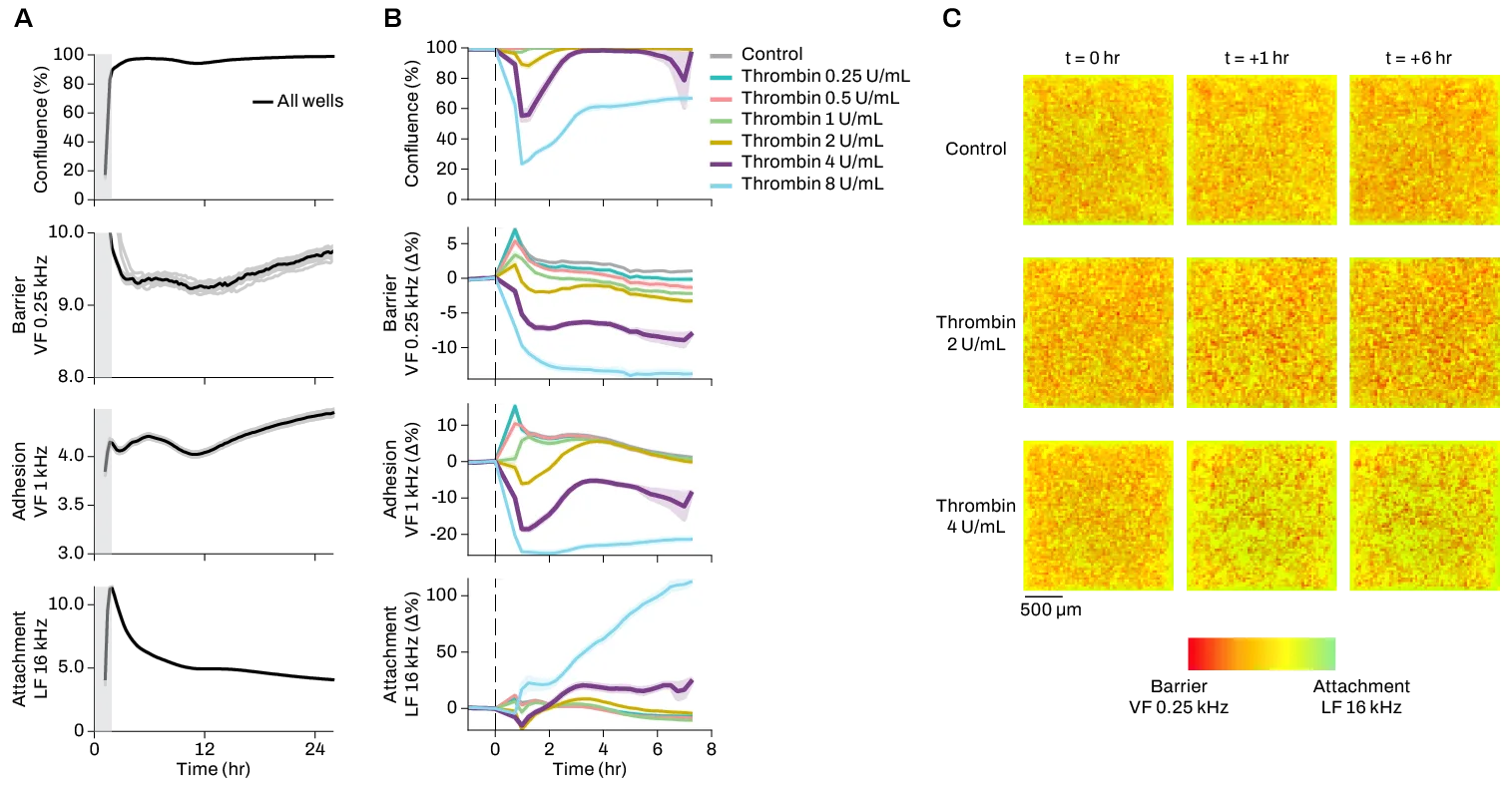Primary cells are an ideal source for creating robust and translationally relevant in vitro models. However, primary cells are often genetically, and thus phenotypically, heterogenous. Factors like donor background, passage number, and extracellular matrix (ECM) composition all contribute to variability in cell behavior, making them important to consider in experimental design.
In this case study, you will explore:
- The effects of donor variability on key functional parameters such as confluence, attachment, barrier integrity, and motility
- How passage number introduces phenotype drift in primary cells
- The impact of ECM coating on cell morphology over time
- How CytoTronics’ electrical imaging platform captures changes in cell function and behavior over time with high sensitivity and resolution
Profiling phenotypic differences between cells from different donor backgrounds.

